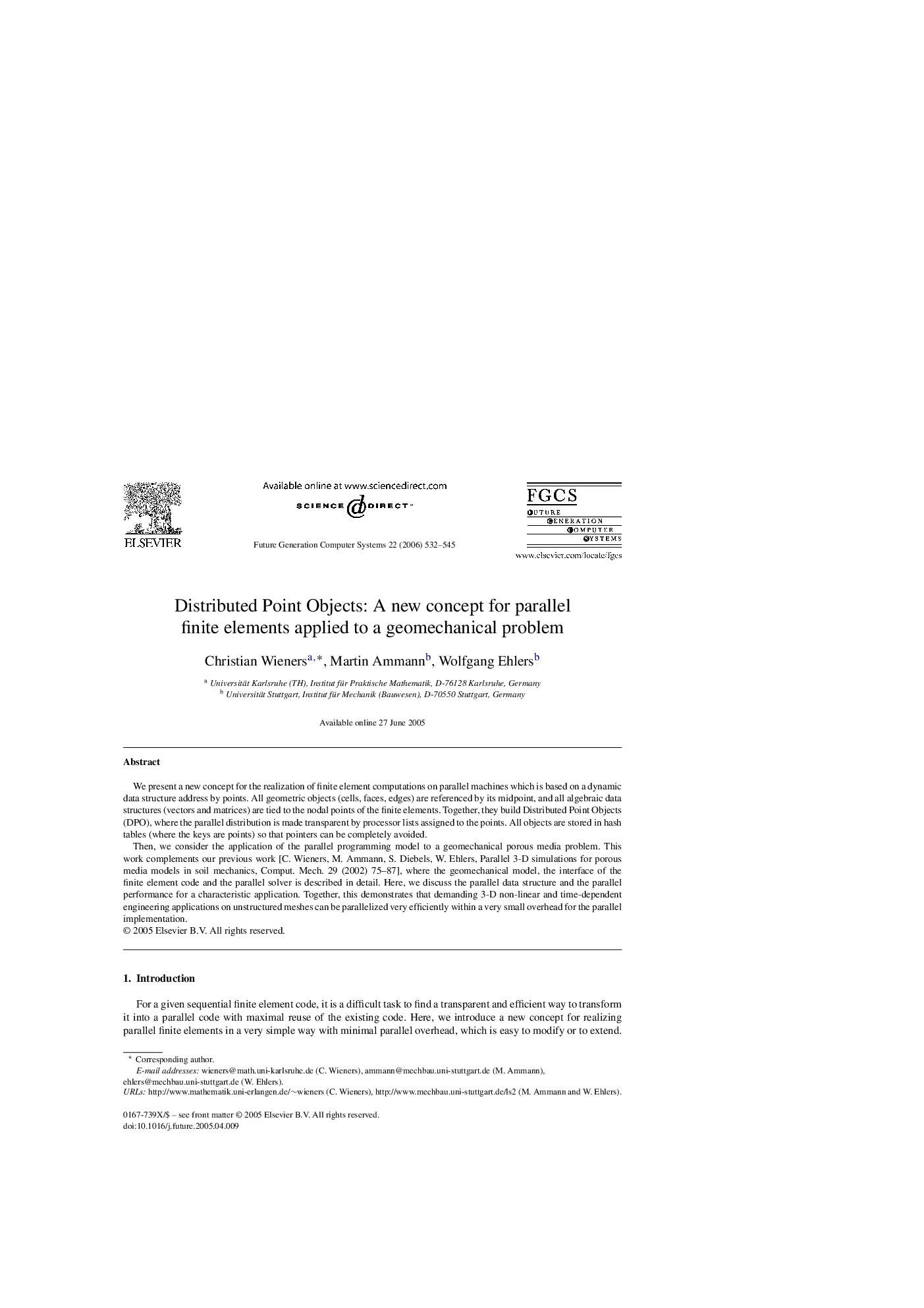| Article ID | Journal | Published Year | Pages | File Type |
|---|---|---|---|---|
| 425767 | Future Generation Computer Systems | 2006 | 14 Pages |
We present a new concept for the realization of finite element computations on parallel machines which is based on a dynamic data structure address by points. All geometric objects (cells, faces, edges) are referenced by its midpoint, and all algebraic data structures (vectors and matrices) are tied to the nodal points of the finite elements. Together, they build Distributed Point Objects (DPO), where the parallel distribution is made transparent by processor lists assigned to the points. All objects are stored in hash tables (where the keys are points) so that pointers can be completely avoided.Then, we consider the application of the parallel programming model to a geomechanical porous media problem. This work complements our previous work [C. Wieners, M. Ammann, S. Diebels, W. Ehlers, Parallel 3-D simulations for porous media models in soil mechanics, Comput. Mech. 29 (2002) 75–87], where the geomechanical model, the interface of the finite element code and the parallel solver is described in detail. Here, we discuss the parallel data structure and the parallel performance for a characteristic application. Together, this demonstrates that demanding 3-D non-linear and time-dependent engineering applications on unstructured meshes can be parallelized very efficiently within a very small overhead for the parallel implementation.
